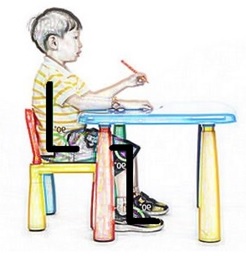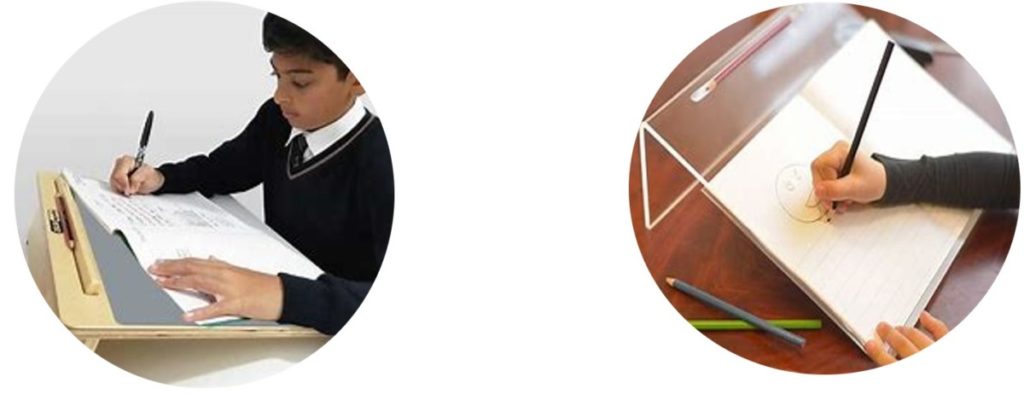Posture
Good sitting position
It is important for children to be stable and comfortable while seated at a desk or table to enable them to sufficiently maintain focus and attention, while also supporting them to use their hands effectively.

Check the child’s body position. They should have:
- a straight back with their bottom and lower back touching the back of the chair
- feet flat on the floor or supported on a box
- hips, knees and ankles at right angles (see picture) 90° at ankle, knees and hips
- sit symmetrically with head in a central position
- chair pulled in within comfortable reach of the table
- ensure shoulders and arms are resting in a comfortable position either on table top or on armrests. A chair with armrests is a simple change that gives the child more support to sit upright and more feedback therefore supporting with their awareness of where their body is in space.
- clearance between the back of the knee and the seat edge, approx 2 finger width.
- clearance between the top of the thigh and the table.
- the table height should be equal to or up to 2’’ above the height of the elbow, when the arms are resting by the sides of the body.
There are many options available online or in high street stores that can provide this level of appropriate support for the young person when they are sitting both in the education and home environments. However, if you’ve tried different commercially available options and can’t find something that meets the young person’s needs, please seek advice from our service.
Are they leaning/flexed over table or have difficulty shifting their view from the board to their desk. Consider trying a writing slope, it can be useful for some children to ensure good sitting position, helping stabilize their wrist in handwriting tasks and offers a better viewing position to look from desk to board.

Are their feet consistently wrapped around legs of the chair? Are they slumping and leaning head on hand? This often indicates a sign of poor core strength and stability. When children have not fully developed core stability and strength within their trunk, sitting in a chair for long periods of time can often take a lot of their concentration and energy.
Are they constantly fidgeting in their seat or swinging their legs? Children who find it difficult to sit still require movement in order to learn and maintain alert. Likewise, children may often move around in chair to feel me more stable this can also often indicate poor core strength and stability. Consider movement breaks throughout the day.
Consider some core strengthening exercises: See our information resources on Gross Motor, Shoulder and Core Strengthening.
